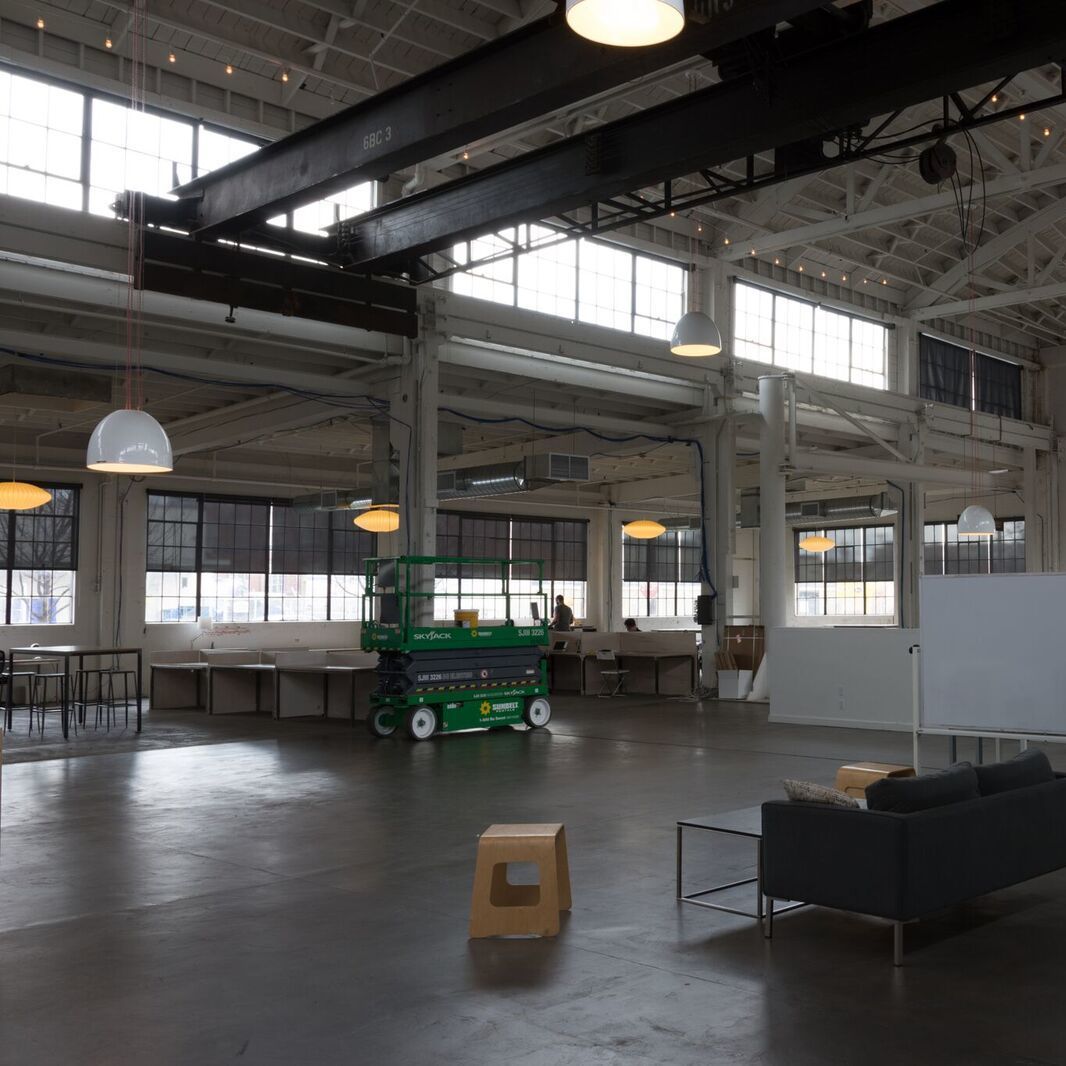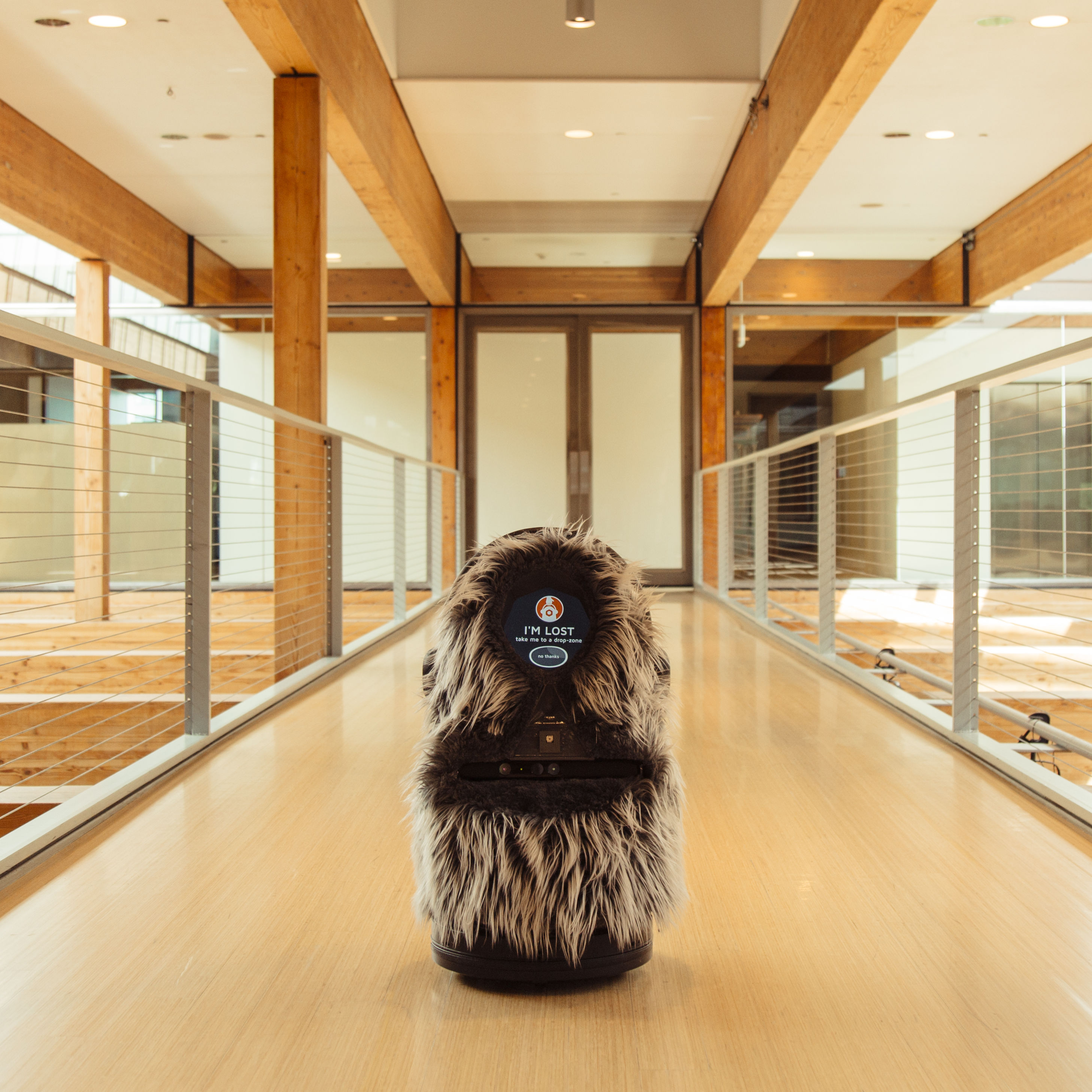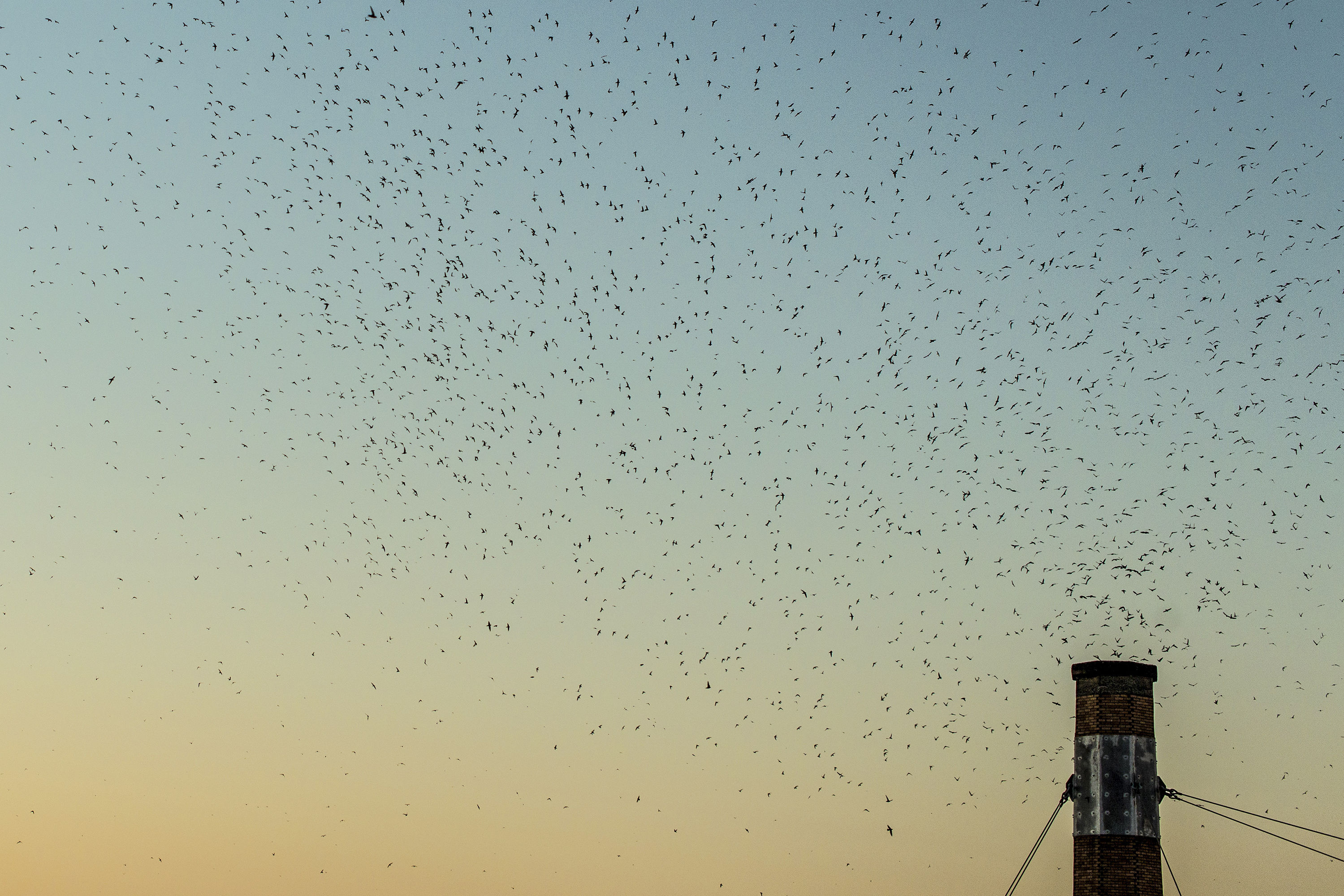Six Oregon-Hatched Ideas That Could Change the World
River-Watching Drones • Arduboy, the 8-Bit Gaming Device •
Intel's War-Free Tech • The Greatest Trail in Oregon • Avant-Garde Aerobics • Portland's Fashion Collective
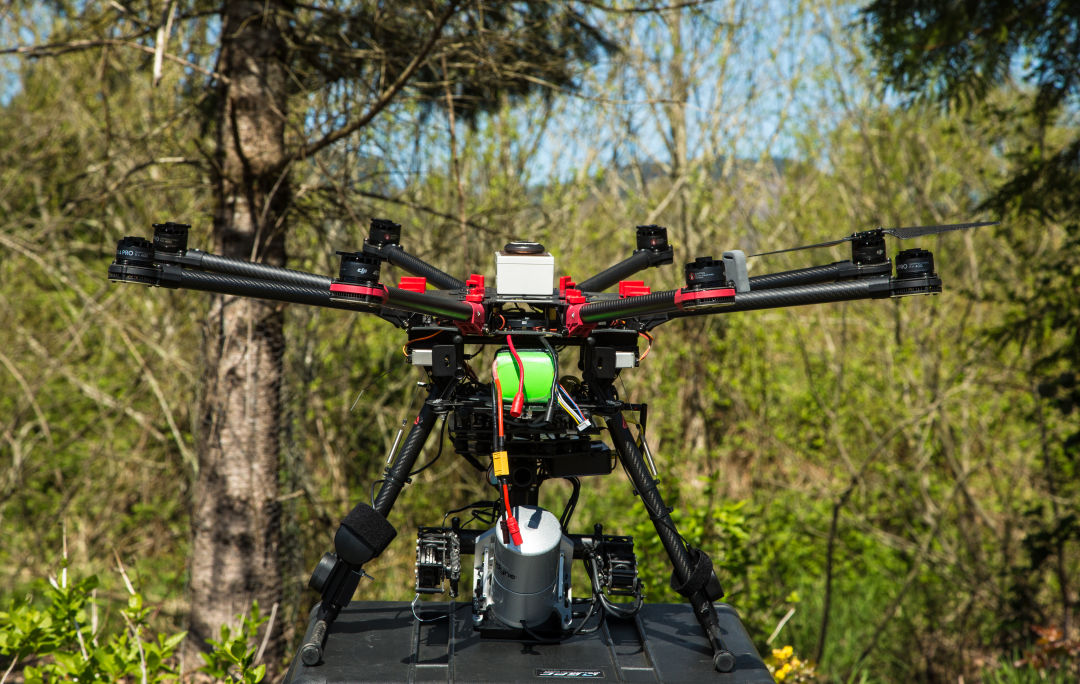
The Green Drones
Save the planet, one drone flight at a time? That’s the hope of Portland environmental nonprofit the Freshwater Trust; this past March they unleashed a 3DR Solo drone over Cedar Creek, a side channel of the Willamette Valley’s McKenzie River. In under an hour, the sleek, black, four-rotor flyer captured almost 4,000 images of a newly planted two-acre restoration zone. Next, the images were stitched into a 3-D computerized map revealing growth rates, species survival, biomass, and canopy cover: crucial data gathered at a fraction of the time and cost as field researchers. Should the trust’s effort prove not only cheap but accurate—as Freshwater Trust habitat restoration manager Monique Leslie suspects it will be—drone observation could be a new way for cash-strapped nonprofits to track projects here and around the world, like a Portland State University land use project under way in Rwanda. “Drone tech will never fully replace the need to ground-truth,” says Leslie, “but we could monitor projects on an annual basis. We’re hoping this will help others.” —RD
The Tiny Video Game That Could Go Big

IMAGE: MIKE NOVAK
The Arduboy, a handheld, eight-bit gaming device designed by 32-year-old Portlander Kevin Bates, first set the Internet alight when a YouTube video of an early version two years ago racked up half a million views. That was followed, in May of last year, by a Kickstarter campaign that hauled in more than $400,000 in pledges. Bates quit his job, moved (temporarily) to China, and manufactured the first round of real-life Arduboys: a palm-size wafer of video game action, controlled with joyfully basic buttons and arrows, for which anyone can design a game. “Everything’s free,” says Bates. “And because it’s open sourced, you can open up the source code and learn from it, change it, remix it.” The system already boasts numerous downloadable games, including the Oregon Trail–esque Cascade Path. If that doesn’t press your buttons, the Arduboy can double as a synthesizer, keyboard, or mouse, and—according to the Kickstarter video—can control anything that has a USB port. Free online tutorials can make the Arduboy a gateway to coding.
With 10,000 units already shipped, four employees, and increasing demand for this five-millimeter-thick piece of pocket entertainment, Bates is running to keep up. “I just created something that I wanted for myself,” he says. “If you create something unique enough and you share it, the audience itself will carry the message.” —FM
War-Free Tech
Blood diamonds had Leonardo DiCaprio. Blood tungsten has Carolyn Duran.
OK, the metaphor is inexact. But as director of supply chain sustainability at Intel, Duran has been at the center of efforts to eliminate so-called conflict minerals from the tech giant’s products. Like diamonds, these metals—tungsten, tantalum, tin, gold—are often mined in war zones, such as the Democratic Republic of Congo. The associated revenues can end up funding armed groups. But since January 2014, Intel’s microprocessors have been free of conflict minerals. This year, Oregon’s biggest private employer extended that mandate to its other products. “Somebody’s actually got to stand up and say, ‘I’m going to do it,’” Duran says.
Impossible? No. Challenging? Very. Intel’s supply chain is a tangled skein. But the company determined that smelters where raw minerals are processed were the best place to focus their attention. Since efforts launched eight years ago, Duran and her team have visited more than 100 smelters in 21 countries. Intel now has a careful audit process to check that minerals have been responsibly sourced.
“If Intel gets a new supplier, or buys a new company,” Duran says, “the process starts again.” —RJ
The Hood-to-Coast Loop
First came the 40-Mile Loop, a park-beaded trail proposed in 1904 by pioneering landscape architects. A century-and-change later, it’d be more accurate to call it the 140-Mile Loop: the patchwork of pedestrian-friendly paths—including the Columbia Slough, Springwater Corridor, and Wildwood Trail—that just about encircles Portland (and Gresham), from Council Crest to the Sandy River.
A grand vision, indeed. But it could be the mere germ of what some call the Infinity Loop: a leminscate-shaped, continuous pedestrian route curving from Pioneer Courthouse Square to the west face of Mount Hood to the Pacific and back. A project placing Portland at the center of one of the world’s greatest trail networks would take generations, but that doesn’t faze Portland State University urban planning professor Ethan Seltzer. He notes that sections are already under construction or even complete, like the Salmonberry Trail west to Tillamook, the Pacific Crest Trail, and pedestrian stretches of the Historic Columbia River Highway and the Coast Trail.
“This can be mapped,” says Seltzer, who a few years ago enlisted his graduate students to hash out many of the details with Metro. “Large, visionary trail routes like the PCT didn’t fall out of the sky. We have a history of doing this.” —RD
Avant-Garde Aerobics
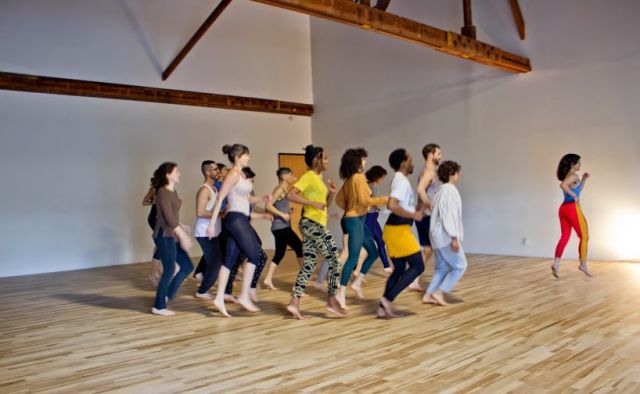
Image: Taka Yamamoto
Performance art meets reading group ... with added step aerobics class? There’s no easy way to characterize Physical Education, an innovative Portland group formed in 2013 to make the often-intimidating art of contemporary performance more accessible to audiences, while connecting it to some bigger thinking about the art form. PE—consisting of local artists Keyon Gaskin, Allie Hankins, Lucy Lee Yim, and Takahiro Yamamoto—puts on performance art shows in tandem with a series of reading groups tackling articles and books about the contemporary arts. And then there’s Transcendentaerobicourage—PE’s free dance/aerobics classes where participants get physical themselves, to bring them a little closer to the physical aspects of performance. “I don’t know if anyone’s been to my class and then watched a performance and gone, ‘Wow, that makes so much more sense,’” Hankins says. “But people really like it.” —FM
Living-Wage Jobs in the Fashion Industry
Three springs ago, in one of the Sentinel’s gilded ballrooms, the City Club hosted a panel of fashion industry folks that quickly turned into a public discussion on how to turn Portland’s thriving indie apparel scene into a world-dominating business force. Claire Cochran, a Nike apparel technical developer who was in the audience and looking for a challenge, saw the forum as a starting point. She teamed up with former Mercantile operations manager Krystal Gaynor and City Club member Sonia Grove, and the first blurry beginnings of the nonprofit Fashion Collective were born. Now the group boasts a board of designers, consultants, lawyers, and educators who are gathering information in order to figure out next steps on how to help the style community take aesthetic inspiration to the next economic level. “The main goal is creative living-wage jobs,” Cochran says. “In order to do that it feels like we need to help with developing and defining an infrastructure.” —ED



